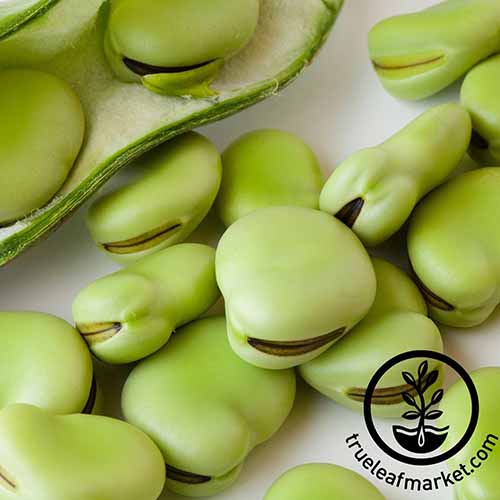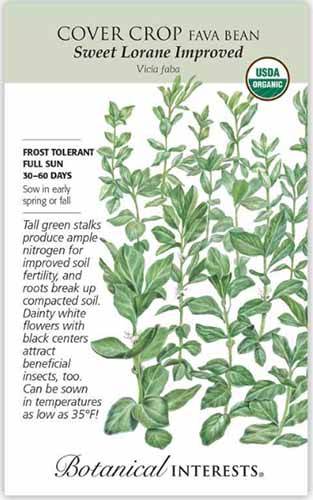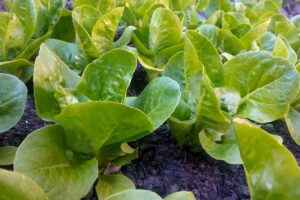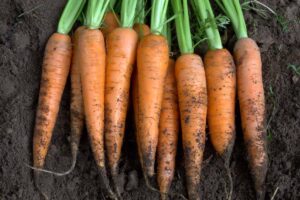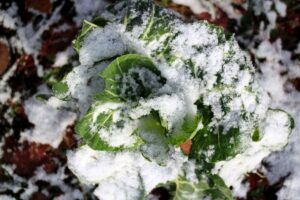Favas are a cool-season crop that produces a harvest of tasty, meaty beans – and they make excellent companion plants!
Since there are different kinds of favas available, it can be helpful to know how these various options will work in the garden.
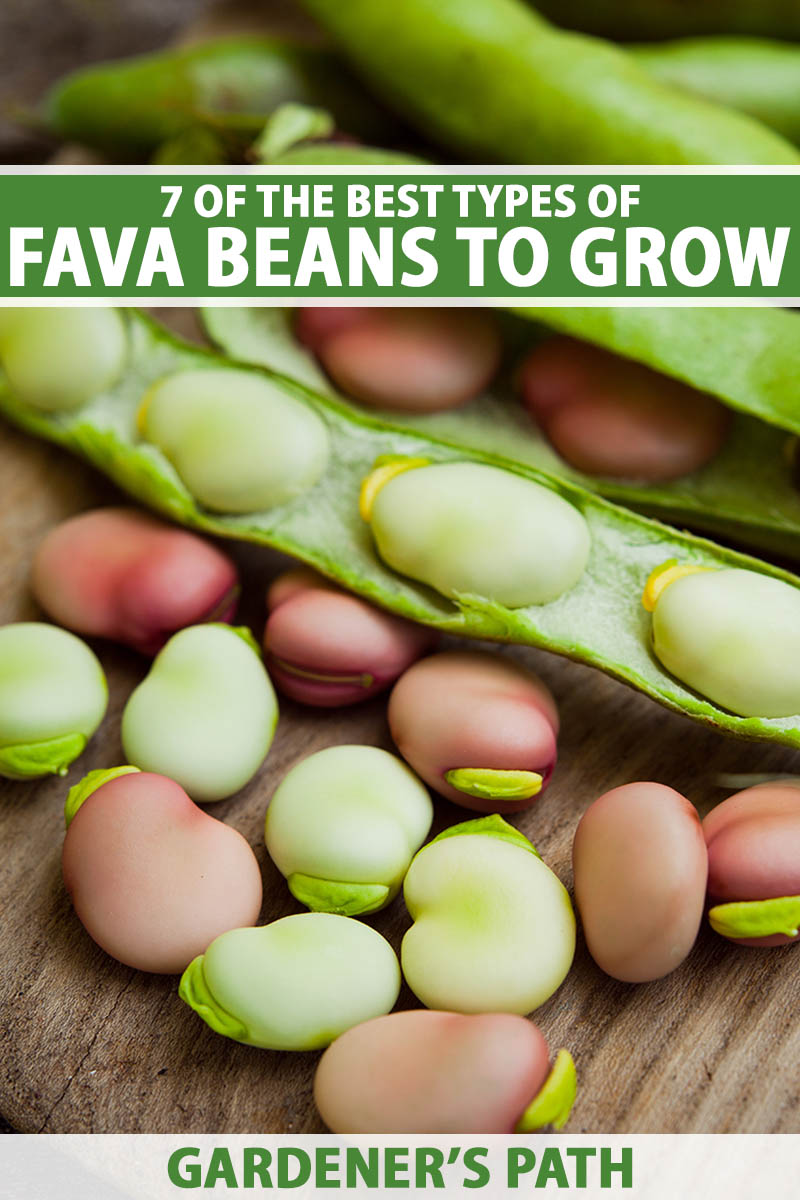
We link to vendors to help you find relevant products. If you buy from one of our links, we may earn a commission.
Vicia faba, the botanical name for this species, is one of the oldest agricultural crops around. There are three named varieties within the species, as well as various cultivars of each type.
Get to know these options so you can choose the ones that are best suited to the length of your growing season as well as your local growing conditions.
Ready to find the fava of your dreams? Keep reading!
7 of the Best Types of Fava Beans
Before we get started, if you need a review of the best techniques for growing this legume, be sure to read our complete guide to growing and caring for fava beans.
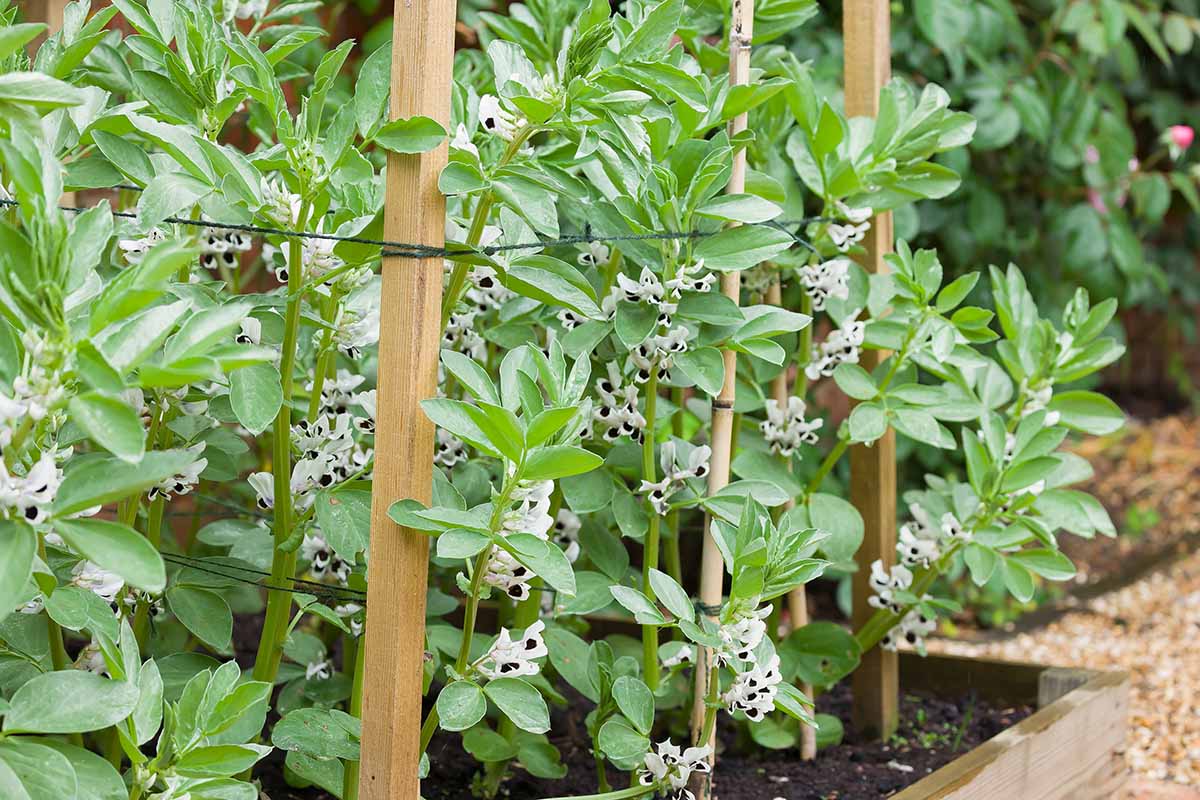
This species is frequently subdivided into three main types. Let’s have a look at what makes them different from each other.
The large, flat-seeded type you may be most familiar with is classified as V. faba var. major.
Commonly called “broad beans,” their large seeds come in an array of colors depending on the variety, including white, tan, brown, green, or purple. These are usually about an inch in length and look similar to limas.
Another type of fava, classified as V. faba var. equina, is commonly known as the “horse bean.” These got their moniker from their use as a livestock forage, particularly for our equine friends, horses.
Seeds are medium-sized, rounded, and dimpled, and are usually brown to olive green in color. These are sometimes called “baby favas” and are a popular option for green manure and cover cropping.
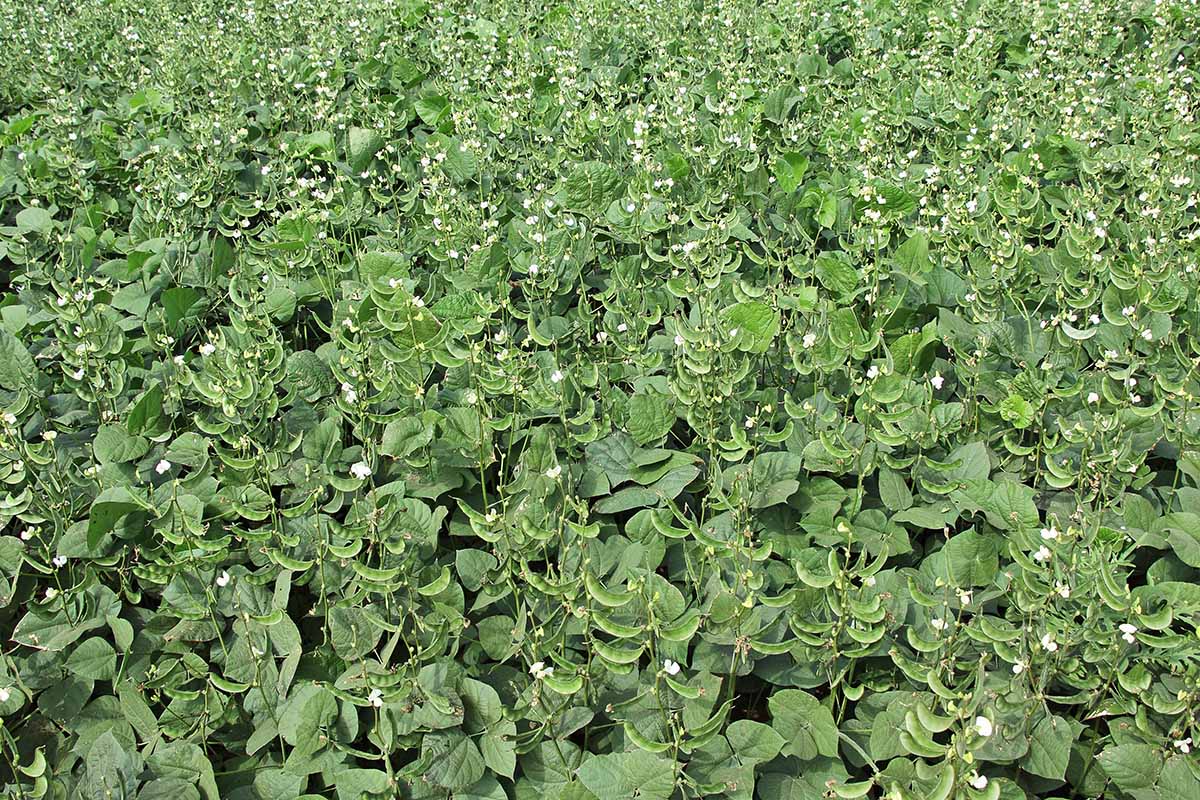
Learn more about horse beans in our dedicated article. (coming soon!)
The smallest-seeded favas, V. faba var. minor, have many different common names, including tick or tic peas and pigeon beans. Each seed is about the size of a lentil.
Like horse beans, this legume has a traditional use as a livestock feed, but it can also be enjoyed in the kitchen.
Some classify this type as V. faba var. minuta. This type is another excellent option to use as a green manure or cover crop.
1. Aguadulce
Also known as ‘Aquadulce,’ this cultivar of V. faba var. major bears eight- to nine-inch pods containing seven to eight tan-colored seeds each.
‘Aguadulce’ plants reach three to four feet in height, and are cold hardy to about 15°F.
This heirloom cultivar has a shorter growing season, requiring just 70 to 90 days for a spring crop to mature.
You can purchase ‘Aguadulce’ seeds in an assortment of package sizes at True Leaf Market.
2. Bell
Typically used as a cover crop or for livestock forage, bell bean is a common name for V. faba var. minor.
These are also sometimes called “small-seeded horse beans.”
Plants reach two to five feet tall and are cold hardy to 25°F.
Bell bean seeds can be purchased in a selection of package sizes from True Leaf Market.
3. Crimson Flowered
Also known as ‘Crimson Flowering,’ this V. faba var. major cultivar will stun and surprise fava aficionados with its magenta blooms.
And gardeners aren’t the only ones who’ll be delighted – these flowers are also highly attractive to pollinators.
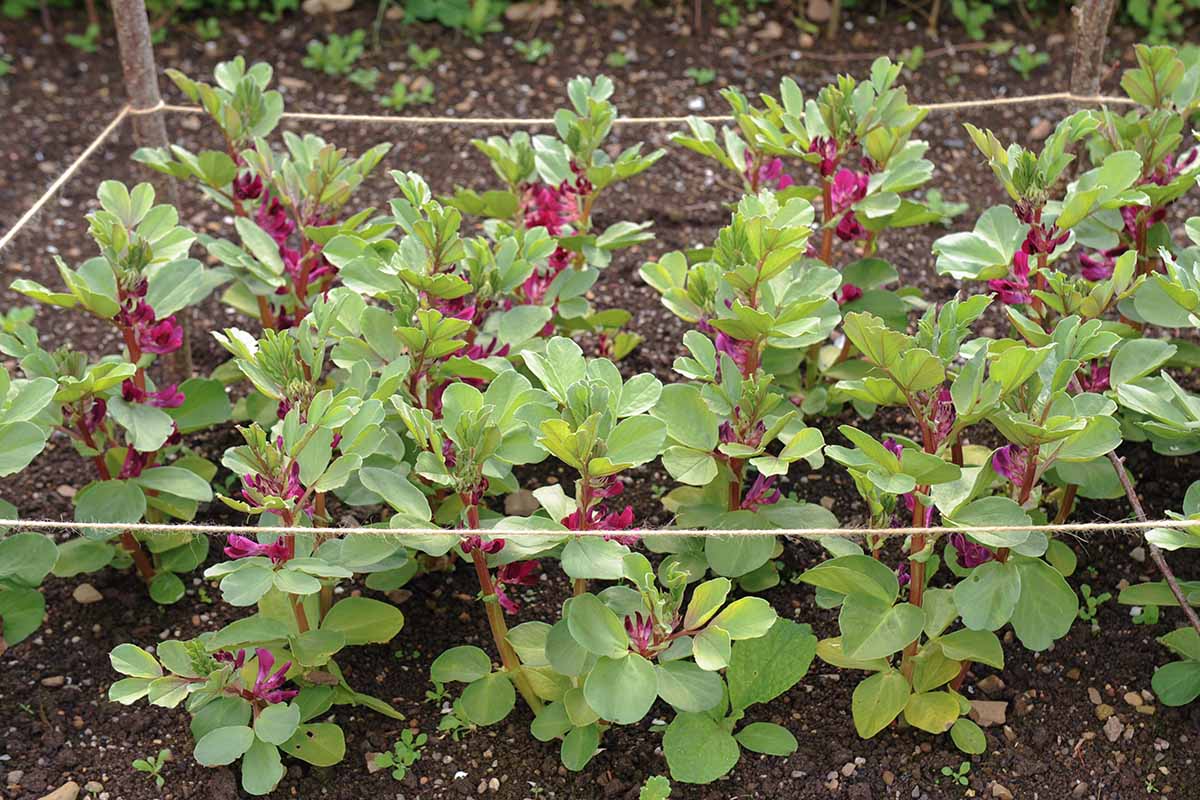
The stout plants grow to about three feet tall and require little support.
‘Crimson Flowered’ reaches maturity in 90 days when grown in spring, and in 160 days for fall plantings, with seeds drying to a bright green hue.
4. Diana
‘Diana’ is a high-yielding variety of V. faba var. major.
Pods are three and a half to four inches long, produced on plants that are hardy to 10°F.
‘Diana’ seeds are available in one-pound packs from C. S. Osborne and Company via Amazon.
5. Robin Hood
‘Robin Hood’ is a dwarf cultivar of V. faba var. major that grows only 12 to 18 inches tall.
This compact cultivar produces pods that contain four to six green seeds each, with spring crops maturing in 90 to 100 days.
6. Stereo
‘Stereo’ is a cultivar of V. faba var. major that is often grown for its tender, immature pods.
Plants reach three feet in height, bearing pods that contain five seeds each.
While most broad beans have tough seed coats that should be peeled prior to eating, ‘Stereo’ was bred for thin, tender skins.
This cultivar requires 95 days to maturity for spring-planted crops.

You’ll find ‘Stereo’ seeds available for purchase from Hirt’s Garden Store via Amazon.
7. Sweet Lorane
A highly productive and cold-hardy variety, ‘Sweet Lorane’ is likely a cultivar of V. faba var. equina, a variety of the species that are commonly known as “horse beans.”
This dual-purpose fava can be used as a cover crop, and to produce a tasty harvest.
Seeds are greenish to brown to tan, and half the size of broad beans. And they have thin skins which means they don’t need to be peeled before enjoying them.
Plants reach 30 inches tall, show good disease resistance, and are cold hardy to 10°F. When mulched, they may be able to survive temperatures as low as 0°F.
For ‘Sweet Lorane,’ count on 95 days to maturity for spring-sown crops, or 230 days for crops sown in fall.
You can purchase ‘Sweet Lorane’ seeds in 50-gram packets from Botanical Interests.
Seven Ways to Fall for Favas
Favas make fabulous plants, and with seven different recommended options to add to the garden, it’ll be hard to resist their charms.

Which type are you growing this year? Do you have any other favorite favas that you think should be included in this list? Let us know in the comments section below!
A garden without legumes is a garden that needs more nitrogen fixers! Read these articles next to learn more about growing legumes in your garden:
